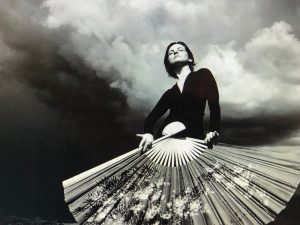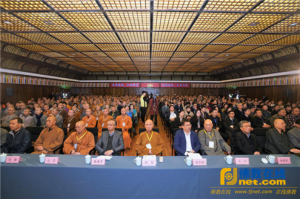
Buddhism and anti-war performance art intersect in intriguing ways, often reflecting Buddhist principles of nonviolence, compassion, and the pursuit of peace. While Buddhism does not explicitly advocate for specific forms of artistic expression, Buddhist practitioners and communities have engaged in various forms of creative activism to protest war and violence, including performance art.
What is anti-war performance art?
Performative actions protesting war and militarism are as old as recorded history.
Self-immolation, the act of intentionally setting oneself on fire as a form of protest or sacrifice, has been historically associated with Buddhist traditions and can be interpreted as a form of performance art. While self-immolation is a deeply solemn and often tragic act, it can also be viewed through the lens of performance art in certain contexts.
In 1963, a Buddhist monk in Vietnam set himself on fire in the middle of an urban intersection, immediately drawing worldwide attention to the persecution of Buddhist monks, to the senselessness of the Vietnam War, and to a growing segment of the population that was tired, worn out, and nearly defeated by war itself. Self-immolation is not considered a form of suicide by monks, but an act of ritual offering. It has not always been performed in public, but when it has been done intentionally in public, for the sake of being noticed, the tragic act of self-sacrifice becomes a powerful performative statement against injustice.
In Buddhist culture, self-immolation is sometimes seen as an extreme form of sacrifice, symbolizing devotion to principles such as compassion, nonviolence, and the alleviation of suffering. Those monks who engage in self-immolation have done so as a form of protest against war, oppression, or social injustice, aiming to draw attention to their cause and to inspire change through their ultimate sacrifice. It is not surprising that seppuku, the Japanese samurai suicidal act of hari-kari, is derived from a Buddhist culture steeped in appreciation for the transience of life. Practicing Zen Buddhism was part of being a samurai. Seppuku has also been used in performative ways. We see this in the ritual suicide of Japanese author Yukio Mishima.
As noted above, self-immolation gained international attention as a form of political protest in the 20th century, particularly during the Vietnam War era. Buddhist monks and nuns in Vietnam engaged in self-immolation as a means of protesting the persecution of Buddhists by the South Vietnamese government and to advocate for peace. These acts were deeply rooted in the Buddhist teachings on compassion and nonviolence, and were intended to provoke moral outrage and mobilize public opinion against war and injustice. These acts were, and remain, indelible public spectacles.
Self-immolation within the context of performance art is viewed as a deliberate and highly symbolic act of public theater aimed at challenging societal norms and inspiring social change. While self-immolation may not fit neatly into traditional definitions of performance art, it shares certain characteristics, including its theatricality, its use of the body as a medium, its ability to provoke emotional responses and cultivate dialogue.

In the 14th century, Zeami wrote a Noh play about the 16-year-old Atsumori of the Taira clan. He was a sensitive and cultured young samurai, slain in horseback battle in the roaring waves of the sea; killed by the mightiest warrior of the Minamoto clam, Kumagae. The story is often depicted in art and in other forms of theater besides Noh. Kumagae is obliged to kill Atsumori, according to the rules of samurai warfare. Atsumori accepts this even as they both acquiesce to the reality of this fleeting world.
Kumagae becomes a monk after this killing, praying for Atsumori’s soul. Later, in a vision while walking, Kumagae, now a monk, encounters the ghost of Atsumori, sword in hand. But this time, Atsumori has every advantage to kill Kumagae. In the moment of the action causing death, Atsumori drops his sword, disavowing warfare, advocating peace.
The extreme nature of self-immolation is matched—although not in the loss of life—by the extreme manner and context of other anti-war performance. In part two of this series, I will share other historically significant anti-war performances: Lysistrata, the Greek Comedy by Aristophanes, first performed in an Athenian amphitheater in 411 BCE; and the 1932 German expressionist ballet The Green Table, choreographed by Kurt Joos. Like Atsumori, both Lysistrata and The Green Table have been performed continuously ever since their creation. As Adam Sklute, the director of Ballet West in Salt Lake City explained recently to a pre-show audience, “The Green Table is, unfortunately, always relevant.”
For now, I’ll leave you with a contemporary example of anti-war protest in popular culture. Buddhist anti-war performance exists in a greater context of protest performance that condemns war, promotes peace, and inspires social change. Pop singer Madonna has always been a protest artist. The backdrop and acrobatic dance performance for “Nobody Knows Me,” during her 2012 MDNA tour, is a brilliant and provocative piece of anti-war performance. This protest was performed in Moscow, directed at President Vladimir Putin, who had enacted punishing restrictions on sexual orientation. It’s a moving and frightening performance. Like Buddhist immolation, with death at the center of the performed act, this interlude reaches its peak honoring nine gay teenagers who committed suicide. One by one, nine dancers kill themselves in a dance depiction that is hard to watch. Death is at the center of this protest; as with other anti-war performances. Showing the horrors of brutality is motivated by the creative opportunity for instigating change.

See more
Related features from BDG
Matsukaze: Wind in the Pines
The Ancient Noh Stages of Sado, the Isle of Exile
Noh Now
Pure Land Buddhism in Noh: The Shuramono Plays of Zeami
Beauty and Sadness: Reflections on a Japanese Noh Play













It takes two to tango. If people do not engage in killing such extreme violence would not happen. Through propaganda people are led to believe that these other peoples are non-human and thus it is permitted to slaughter them and in fact a duty. Through Buddhism we are taught the twin pillars of Wisdom and Compassion, and through the practice of Equanimity we apply these principles equally to all sentient beings.
To effectively end extreme violence such as war, one must go to the root causes and not hack at the branches.
As Buddhist we know the root causes as the Three Poisons, Avarice, Anger, and Ignorance. If you have Appreciative Joy, you will not be greedy for what others have, if you practice Compassion and Loving-Kindness you will not allow emotions and unskillful behavior to solicit a reaction, if you properly educate yourself, one will eventually gain wisdom to end ignorance. Otherwise while such extreme measures of protest will only draw attention to injustices but the root causes still flourish and thus the show goes on.